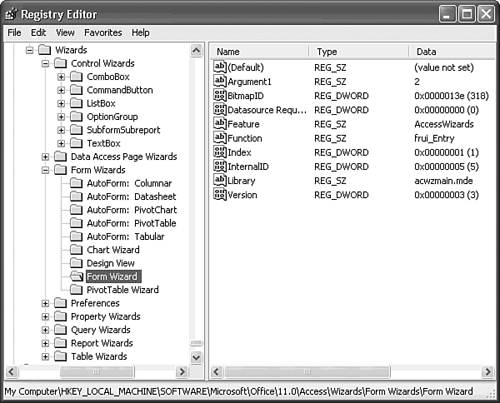In the Real WorldAccess Wizardry
In the Real World Access WizardryAccess 1.0 had only a few wizards; Access 2003 has 46, the same number as Access 2002. Microsoft defines a wizard as "A Microsoft Access tool that asks you questions and creates an object according to your questions." The "Wizards, add-ins, and Builders in Microsoft Access 2003" online help topic lists 51 wizards, but four items in the list Documentor, Macro-To-Module Converter, Subform/Subreport Field Linker, and Switchboard Manager don't carry the Wizard suffix and are better classified as utilities. Form-related wizards are the most numerous. The following nine wizards, listed in alphabetical order, assist you in creating custom forms:
One of the reasons that Access 2003 has the largest wizard population of all Office 2003 applications is that Access is the most complex of the Office 2003 members from both the user and developer standpoint. Access's complexity, compared with Word, Excel, PowerPoint, and Outlook, undoubtedly is the reason that Microsoft doesn't include Access 2003 in the Standard or Small Business editions of Office 2003. The omission of Access from the Small Business edition is surprising, because establishing and maintaining databases is crucial for almost every enterprise, regardless of size. Wizards are classified as Access add-ins, which also include Builders, menu add-ins, and a new class of Component Object Model (COM) add-ins. The standard set of wizards and builders that come with Access appear in the HKEY_LOCAL_MACHINE\Software\Microsoft\Office\11.0\Access\Wizards key of the Registry. Figure 15.63 shows the top-level Registry keys for the Control and Form Wizards used in this and the preceding chapter. Microsoft classifies Access Builders as Property Wizards in the Registry. Figure 15.63. The Registry includes keys for each Access wizard and Builder. Most of the wizards are contained in the Acwzmain.mde file in your ...\Office11 folder; the Acwztool.mde Advanced Wizards file includes the Add-In Manager and some Builders; and Acwzlib.mde holds the Import/Export Wizards. You can open the Acwz... .mde files in Access 2003, but you can't make changes to objects. It's unfortunate that Microsoft uses the .mde format to prevent viewing the wizard VBA code; Access wizards are excellent examples of VBA power programming in action. |
EAN: 2147483647
Pages: 417
